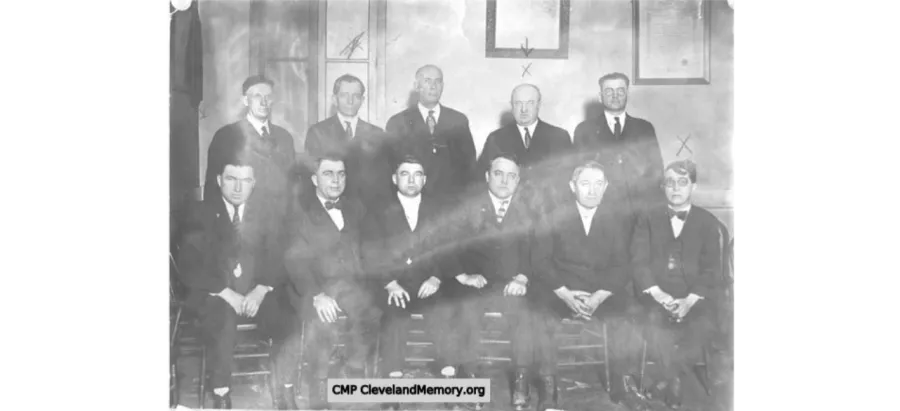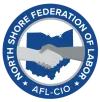The Cleveland AFL-CIO Turns 64

On Easter Sunday, the North Shore AFL-CIO Federation of Labor, previously known as the Cleveland AFL-CIO, turned 64. The North Shore AFL-CIO is the organized voice of 80,000 working people in Cuyahoga, Lake, and Geauga counties.
Early History
The history of the Cleveland AFL-CIO is as old as the labor movement in Cleveland. Workers understood the necessity of joining together to build power as early as 1874 when they began organizing under the "Industrial Council. The Industrial Council and its affiliate unions eventually joined under the Knights of Labor, establishing itself as the Trades & Labor Assembly District No. 47. In just ten years, District No. 47 had at least 50 affiliated locals and began working collectively to replace the wage system with a more equitable distribution of wealth. Unfortunately, District No. 47 welcomed a broad coalition of workers, making it susceptible to political and business interference. Gradually, the organization lost its focus on improving workers' quality of life.
The Amercian Federation of Labor
When the American Federation of Labor (AFL) formed in Columbus in 1881, organizers rushed to Cleveland to build support for the organization. As a result, many trade unionists left the Knights of Labor. However, by October 1887, the Typographical Union #54, Cigar Makers #7, Iron Molders #218, Typographical #6, Amalgamated Carpenters, Brewery Workers #17, and Baker Workers #19 were chartered under the AFL. Shortly after, they joined to form the Central Labor Union (CLU). In 1890, the CLU consisted of 26 locals who grew to 71 by the turn of the century.
In 1902, the independent Building Trades Council and the CLU merged to create the United Trades & Labor Council – later becoming the Cleveland Federation of Labor (CFL) in 1910. Despite the influential role that the more conservative Building Trades played in the CFL, the organization struggled to gain acceptance and recognition in the early years due to the largely anti-union Cleveland business community.
The Rise of the CIO
By the New Deal, the labor movement was changing across the country. Led by United Mine Workers president John L. Lewis and motivated by the National Industrial Recovery Act, the movement drove organizing workers along industry-wide lines. The Congress of Industrial Organizations (CIOs) challenged norms within the CFL, specifically their organization by craft and reluctance to support worker militancy. For example, when the Fisher Body General Motors plant staged a sitdown strike in December of 1936, the CFL supported them. But many of the CFL's members were from craft unions and began to oppose the strike when they were locked out of the plant. In January 1937, the CFL reversed course and came out against the CIO-led strike. Two months later, the CFL expelled five locals under the orders of the national AFL, including the UAW, Amalgamated Clothing Workers, Textile Workers, Steel Workers, and the International Ladies Garment Workers Union. Each of these locals organized under the Cleveland Industrial Union Council (CIUC) the following year.
The CFL had other problems during the 1930s too. The Building Trades Council and the Teamsters created internal divisions that ultimately held up construction projects throughout the city in 1936. The feud ended when local Teamsters leader Edward Murphy worked out an agreement that put the projects back in motion and ultimately unseated Building Tradesman Albert Dalton in 1938 as Executive Secretary. Thomas Lenahan replaced him.
The AFL v. CIO
Over the next decade, the CFL lost significant membership due to raids from the Congress of Industrial Organization (CIO), while other locals left voluntarily. With the election of Philip Murray to the national CIO in 1940, the AFL and CIO feuds simmered. Concerns about communist influence within the CIUC would ultimately keep the relationship tenuous in Cleveland until the Taft-Hartley Act in 1947, which required union officials to sign anti-communist affidavits. Fearful that they would lose affiliates to the CFL, the CIUC expelled members with Communist Party ties.
When the CIO met in Cleveland for their national convention in 1949, they expelled the radical element of their organization. The shift removed obstructions between the CFL and CIUC.
The Merger
In 1955, the AFL and CIO merged to form the AFL-CIO. Three years later, the CFL and CIUC merged to become the Cleveland AFL-CIO with a membership of 200,000.
Source: The Encyclopedia of Cleveland History | Case Western Reserve University
